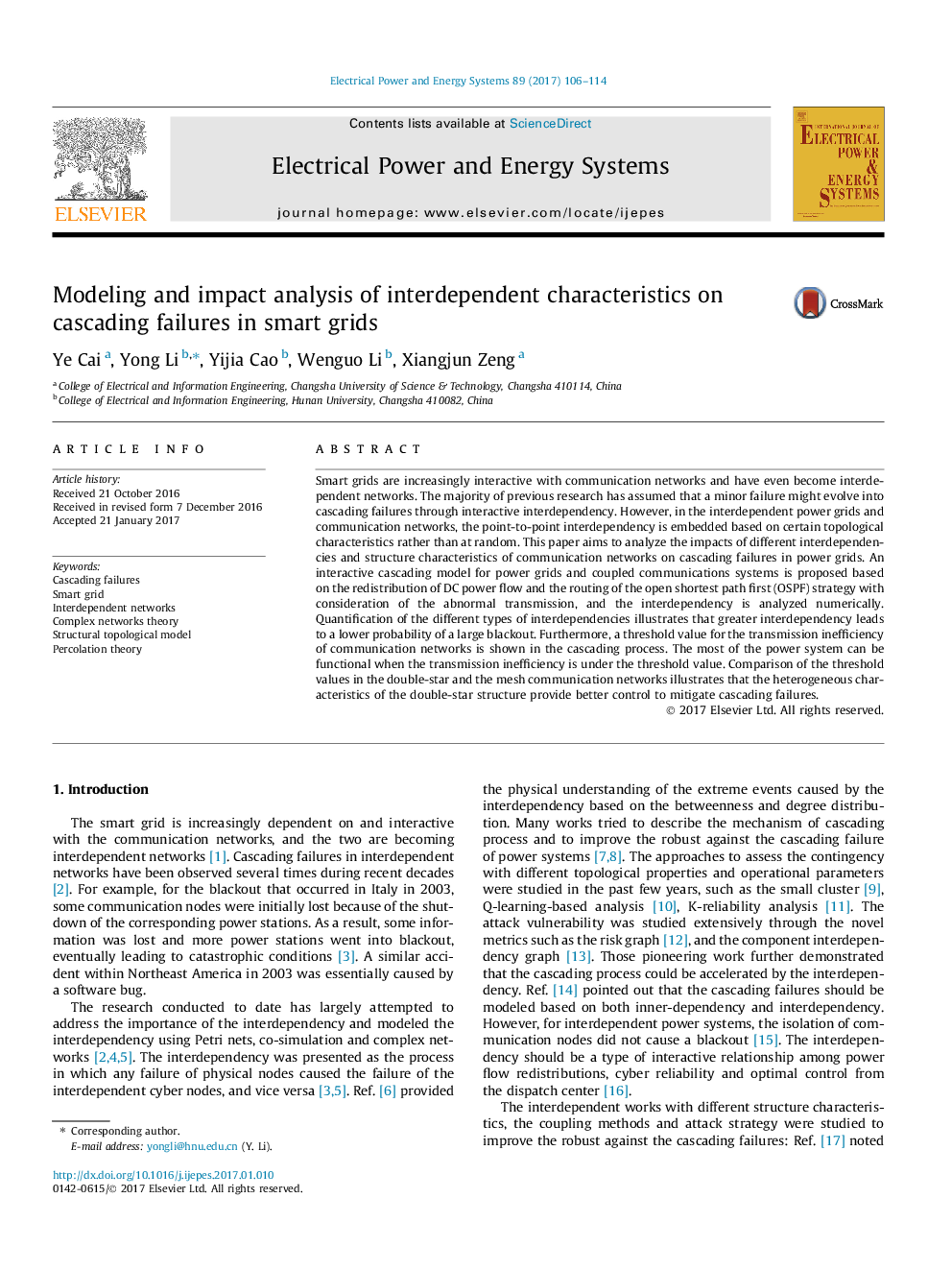| Article ID | Journal | Published Year | Pages | File Type |
|---|---|---|---|---|
| 4945677 | International Journal of Electrical Power & Energy Systems | 2017 | 9 Pages |
Abstract
Smart grids are increasingly interactive with communication networks and have even become interdependent networks. The majority of previous research has assumed that a minor failure might evolve into cascading failures through interactive interdependency. However, in the interdependent power grids and communication networks, the point-to-point interdependency is embedded based on certain topological characteristics rather than at random. This paper aims to analyze the impacts of different interdependencies and structure characteristics of communication networks on cascading failures in power grids. An interactive cascading model for power grids and coupled communications systems is proposed based on the redistribution of DC power flow and the routing of the open shortest path first (OSPF) strategy with consideration of the abnormal transmission, and the interdependency is analyzed numerically. Quantification of the different types of interdependencies illustrates that greater interdependency leads to a lower probability of a large blackout. Furthermore, a threshold value for the transmission inefficiency of communication networks is shown in the cascading process. The most of the power system can be functional when the transmission inefficiency is under the threshold value. Comparison of the threshold values in the double-star and the mesh communication networks illustrates that the heterogeneous characteristics of the double-star structure provide better control to mitigate cascading failures.
Related Topics
Physical Sciences and Engineering
Computer Science
Artificial Intelligence
Authors
Ye Cai, Yong Li, Yijia Cao, Wenguo Li, Xiangjun Zeng,
